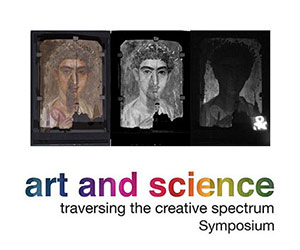Cossairt Delivers Talk at Art and Science: Traversing the Creative Spectrum Symposium
Prof. Cossairt spoke along side Dr. Marc Walton, Senior Scientist for the Northwestern University/Art Institute of Chicago Center for Scientific Studies in the Arts.
Prof. Oliver Cossairt, Lisa Wissner-Slivka and Benjamin Slivka Junior Professor presented his research, titled, "Surface-Shape Studies of Gauguin’s Monotypes, Prints, and Drawings" at the Art and Science: Traversing the Creative Spectrum Symposium, held on Tuesday, May 26, 2015 at the Northwestern University Library, Forum Room.

Abstract: Starting in the 1890s the artist Paul Gauguin (1848-1903) created a series of monotypes and drawings using techniques that are not entirely understood. To better understand the artist’s production methods, the analytical imaging technique of quantitative reflectance transformation imaging (Q-RTI) was used to assess the surface shape of a number of these graphic works that are now housed at the Art Institute of Chicago. The RTI method uses multiple images of Gauguin’s graphic works captured from a fixed camera position, lit from various different directions to create an interactive composite image that reveals textural characteristics. These ‘active images’ reveal details on the sequence of inks applied to the surfaces of the prints and blind incisions in the paper substrate that help resolve longstanding art historical questions about the evolution of Gauguin’s printing techniques. Q-RTI is an advancement of the general RTI technique that has become an increasingly popular method with conservators as a practical and repeatable way to digitally capture the surface texture a work of art. Here we will demonstrate how it is possible to quantify RTI’s by using 3D printed calibration targets with known surface normal characteristics.
